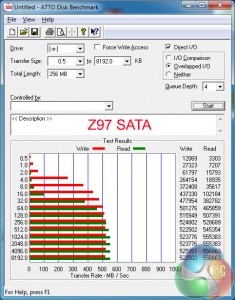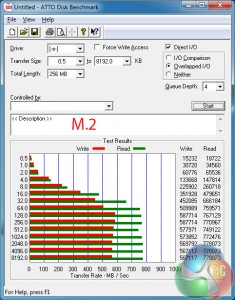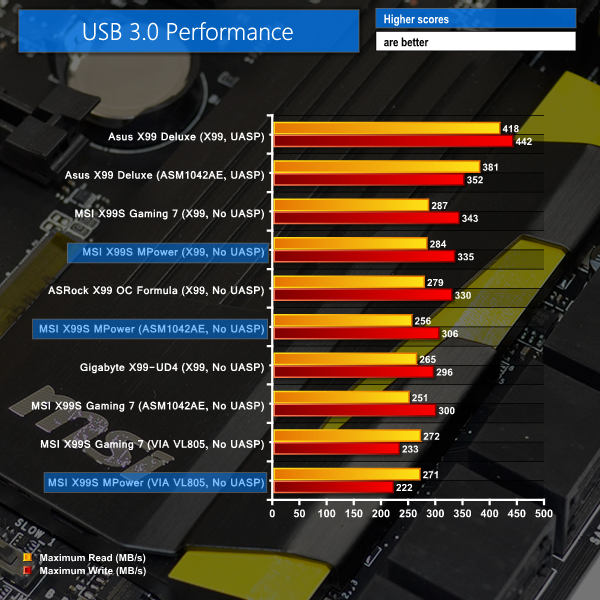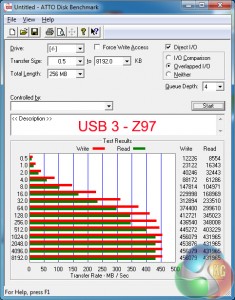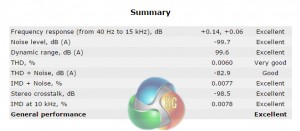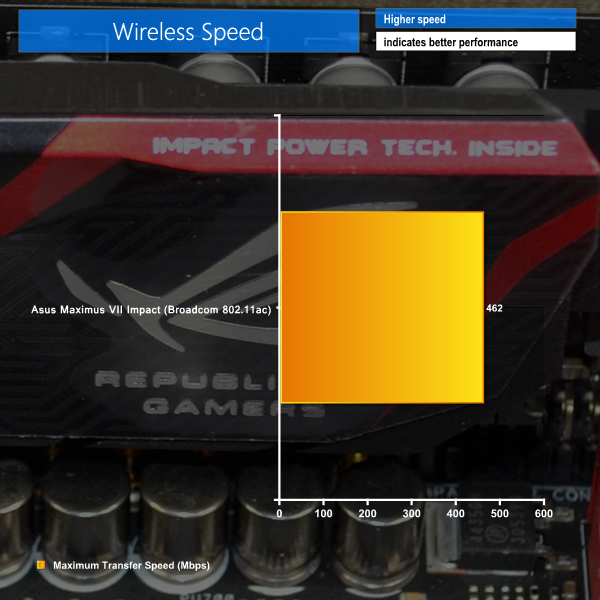SATA
For SATA 6Gb/s testing we use a Kingston HyperX 3K (SandForce SF-2281) SSD.
SATA 6Gbps performance is as we would expect for a Z97-based motherboard; a modern SSD utilising the interface will run without a performance handicap.
M.2 connector
We use Plextor‘s ultra-fast M6e 256GB M.2 SSD to test the speed of a motherboard's M.2 connector. We reviewed the 512GB Plextor M6e (and its PCIe x2 adapter card) HERE. Unfortunately we do not have access to a PCIe 3.0-based SSD to fully test the M.2 connector’s performance limits.
Our Plextor M6e SSD simply isn't fast enough to push the M7I's 32Gbps M.2 connector to anywhere near its limit. The slot is capable of delivering a theoretical 4GBps transfer speed, making it ideal for future-proofing with the PCIe-fed M.2 SSDs of tomorrow.
USB 3.0
We tested USB 3.0 performance using the Kingston HyperX 3K SSD connected to a SATA 6Gb/s to USB 3.0 adapter powered by an ASMedia ASM1053 controller.
It is excellent to see Asus' continued provision of the company's USB 3.0 Boost software that enables UASP speeds for Windows 7 users.
With the protocol activated, Asus' boards (the Maximus VII Impact included) are able to markedly outperform their competitors when using the Windows 7 OS. This is ideal for users who regularly transfer large files, such as games.
Audio
We use RightMark Audio Analyzer (RMAA) to analyse the performance of the motherboard’s onboard audio solution. A sampling mode of 24-bit, 192 kHz was tested.
A Realtek ALC 1150 codec, ELNA capacitors, a dedicated amplifier, EMI shielding, and the front panel audio header are some of the features found on the SupremeFX Impact II audio board.
Audio hardware on the SupremeFX Impact II daughter board provides the M7I with ‘Excellent‘ general performance, according to RMAA. This is good for users who value the audio sections of their games, because an add-on sound card (which would not fit alongside a graphics card) is not a necessity.
Wireless
We use Totusoft’s LAN Speed Test software to measure the real-world throughput offer by the Maximus VII Impact motherboard's WiFi solution.
The test motherboard was located in close proximity to our Linksys EA6900 AC1900 802.11ac wireless router. We tested using the 5GHz frequency band and kept other network resources at a low usage level to ensure the transfer rates were not capped.
Testing the Maximus VII Impact's two-stream 802.11ac wireless connection over a short range shows impressive transfer rate numbers. Levels this high would translate into file copying speeds of around 80MBps, which is ideal if you transfer or (perhaps) stream large games over the network.
 KitGuru KitGuru.net – Tech News | Hardware News | Hardware Reviews | IOS | Mobile | Gaming | Graphics Cards
KitGuru KitGuru.net – Tech News | Hardware News | Hardware Reviews | IOS | Mobile | Gaming | Graphics Cards


